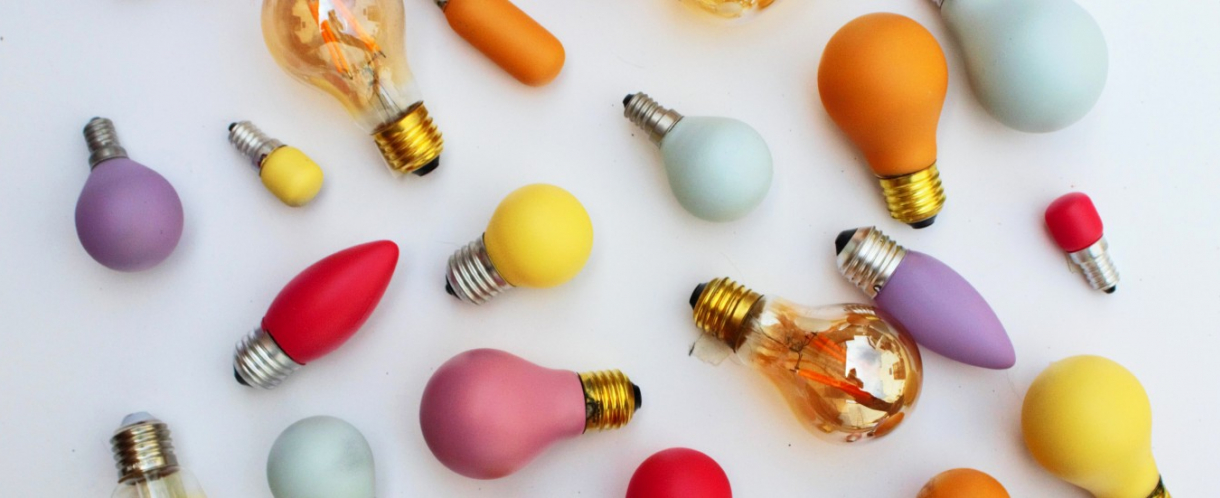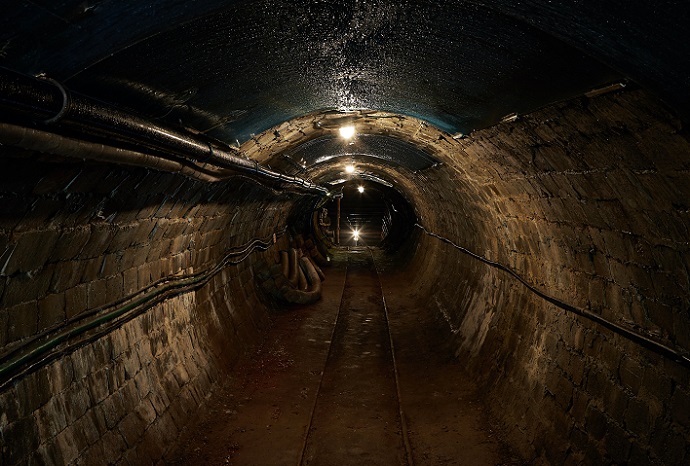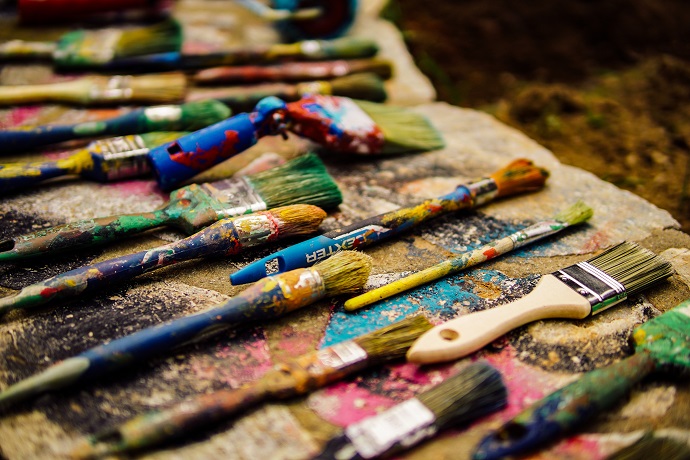
Image: Dstudio Bcn
No idea (or too few ideas) about what to do next in your career? Struggling to come up with options that feel inspiring, and feeling stuck in paralysis as a result? Natasha shares a range of mindset shifts and creative techniques to get you bubbling with possibilities for fulfilling work.
Trying to come up with new, exciting, viable ideas for your career change can feel like running on an endless hamster wheel: huge amounts of effort, no meaningful results.
And a lack of ideas is lethal for motivation: it leaves you feeling stuck, confused, useless, and frustrated.
But you don't have to wait for a bolt of inspiration to come hurtling from the sky. There are things you can do to actively 'unstick' your mind and get moving.
Identify what's keeping you stuck
The creative process is not something most of us learn in school. Instead, we learn to minimise risk, fear failure, avoid ridicule, prepare to be tested and follow linear processes to a largely homogenous view of success.
Which is fine, for many people – but it does mean that when you decide you want to change career, the creative process of idea generation is likely to feel a bit... sticky. Nobody taught you how.
So let's break it down a little.
There are two main reasons you're likely to be struggling to generate ideas for your future career.
- Pre-filtering
- Lack of new inputs
If you seem to have a lot of 'unrealistic' ideas for your career change, you're probably stuck because you're pre-filtering: allowing fears or assumptions to strike options off your list before you've explored them enough. You know you're doing this if your thought patterns sound like: “I'd love to… but…”. (Note – this thought can flit through your mind so quickly you hardly realise it's happening. Watch for it closely.)
And if you're chasing your tail inside your head and coming up with the same ideas over and over again, it's because you're working with the same raw materials: the ideas and experiences and people that you're already exposed to and aware of. You can't be what you can't see.
Here's what to do:
1. Ditch the idea of the Big Idea

“The trick to having good ideas is not to sit around in glorious isolation and try to think big thoughts. The trick is to get more parts on the table.”
– Steven Johnson
One of the most persistent myths of career change is that of the giant light-bulb moment: the sudden, glorious realisation of what you're meant to do with your life.
Still more seductive but inaccurate is the idea that this moment of clarity, if it's coming, must arrive at the beginning of your shift.
These two concepts form a painful paradox – you've decided to step back into the driver's seat and regain control of your career… but you can't take back control until some external (possibly non-existent) force bestows on you the benefit of some as-yet-undefined, startling insight. And you have no idea when it's coming (or indeed, if it's coming at all.)
That's a huge amount of pressure.
And when your life, your well-being, and years of your existence are at stake, it's also a bit defeatist.
So here's a thought: what if, instead of waiting an unknown amount of time for 100% clarity to show up on someone else's timeline, you could generate 5% more clarity every day?
What if you could nudge yourself forward in such a way that your learning – about yourself, and about the world of work and what's available – grew exponentially?
Which approach sounds more practical? Which do you imagine might get you to where you want to be fastest?
Stop trying to generate The Big Idea, and focus instead on coming up with The Next Idea: the idea for an action you could take that would illuminate a bit more of the landscape ahead, and let you choose the next part of your path forward.
No attachment to it being 'right', no expectation for it to lead directly to what you're looking for – just the knowledge that every step forward will reveal new information that you can use to navigate.
Small, consistent action that allows you to discover, learn, and adjust accordingly will get you into fulfilling work far faster than sitting on the couch, waiting for a message from on high.
2. Be honest and hopeful and probably-wrong

“For an idea that does not first seem insane, there is no hope.”
– Albert Einstein
Start by getting it all out.
“I don't have any ideas” is almost always code for: “I don't have any ideas that I can already be confident will work out.” And since none of us have reliably functioning crystal balls, that's neither a useful approach nor a surprise.
So, in this idea-generation stage, it's vital to set aside your assumptions, your fears and your disbeliefs and let whatever you have flow. (Yes, all the assumptions. Even the ones you're convinced are right, despite knowing you haven't actually checked for sure).
There will be plenty of time to test, risk-assess and validate your ideas. But you can't validate an idea you haven't had yet – and you definitely can't use it to change your career.
This is one thing you can be absolutely certain of: you will not get what you want if you're not willing to say it out loud.
Give yourself some time – 10 minutes, a day, a week, 3 months – to be utterly, gloriously, unapologetically honest about what excites, interests and inspires you.
Get all your ideas out on paper; including the awkward ones, the vague ones, the tiny ones, the childhood dreams, the ones that almost hurt to look at because they seem so unattainable.
Include all the ones that you 'already know' will never work out.
This is the very first stage of the process. You do not have to be right.
The only thing you have to be is honest. And hopeful.
“Almost all good writing begins with terrible first efforts. You need to start somewhere. Start by getting something—anything—down on paper. The first draft is the child's draft, where you let it all pour out and then let it romp all over the place, knowing that no one is going to see it and that you can shape it later. You just let this childlike part of you channel whatever voices and visions come through and onto the page...” – Ann Lammott
It's absolutely possible (and even likely) that the ideas that are bubbling up right now, in the form they're in right now, will not be precisely what your future career looks like in the end.
But they're the only starting point you have.
3. Force abundance

“The way to get good ideas is to get lots of ideas and throw the bad ones away.”
– Linus Pauling
If being honest about what you want still feels like it's only generating a few possibilities, challenge yourself to go for quantity over quality.
Coming up with ideas is an ability you can develop over time.
It's a practice in connecting dots, disregarding assumptions, curiosity, problem-solving and play – all things that you probably do every day, but in contexts that don't feel as significant and pressured.
And when something's under pressure, nothing flows.
A powerful way to bypass the pressure of coming up with a 'right' idea is to apply pressure elsewhere.
Put yourself under pressure, instead, to come up with too many ideas. There is no such thing as a prolific perfectionist. When your mind is focused on achieving a numerical goal, it quiets what creativity expert Michael Michalko calls FUDs (fears, uncertainties and doubts) long enough for paralysis to lift and productivity to take its place.
“Set yourself an idea quota for a challenge you are working on, such as five new ideas every day for a week. You'll find the first five are the hardest, but these will quickly trigger other ideas. The more ideas you come up with, the greater your chances of coming up with a winner.”
– Michael Michalko
So, somewhere in the outpouring of ideas there will be ones you can work with. Again, they may seem unlikely or even impossible – you won't yet be able to see how you'd get to them in practice. But you don't have to know the route yet. You just have to be inspired by the possibility of the destination.
4. Mine your history

“The patterns are simple, but followed together, they make for a whole that is wiser than the sum of its parts. Go for a walk; cultivate hunches; write everything down, but keep your folders messy; embrace serendipity; make generative mistakes; take on multiple hobbies; frequent coffeehouses and other liquid networks; follow the links; let others build on your ideas; borrow, recycle; reinvent. Build a tangled bank.”
– Steven Johnson
If you're someone who feels that: “I’ve lost touch with myself – I don't even know what I enjoy any more”, don't worry.
Your life is littered with clues. And if you're able to spot patterns in your past and present (Pamela Slim calls these 'threads'), you can track them forward to predict what's most likely to float your boat in the future.
The best tools for this task are questions that reconnect you with times you feel most 'yourself'. Try these as a starting point, and then invent some of your own:
- When have you been at your happiest?
- What part of the newspaper do you turn to first?
- When have you used your skills in a way that made you proud?
- What subjects, causes, and conversations never fail to capture your attention?
- What kind of shops will you always 'pop into' for a browse?
- Which experiences stand out as ones you'd love to repeat?
- What have people historically come to you for help with?
Don't limit this trip down memory lane to your working life – if you haven't loved your career thus far, it's unlikely to offer up much gold. Include everything from your childhood onward: hobbies, education, volunteer work, projects or tasks in your personal life or at home… Write it all down, and keep all your musings together.
Keep note, too, as you move through your day-to-day life, of the things that capture your attention or make you smile. Articles, designs, logos, companies, videos, activities and experiences, photos, conversations…
The wider a net you cast, the more clues you'll catch.
Then, look for the threads. What patterns do you notice?
5. Hack your systems

“If you want something new, you have to stop doing something old.”
– Peter Drucker
One of the most basic rules of systems theory is: new inputs = new outputs.
So if your outputs are always the same – if you're always chewing over the same old ideas – it's because you're lacking new inputs.
Author and entrepreneur Seth Godin says: “Ideas occur when dissimilar universes collide”.
So, engineer regular collisions into worlds outside your own.
Do something you've never done before. Talk to someone you've never talked to before. Try something you've never tried before. You might take a one-off workshop, read a book from an unfamiliar section of the bookshop, or have a conversation with someone doing work that's very different from your own.
It is vital that these new inputs are at least 80% real-life. Google can be a good springboard, but don't get sucked down the rabbit-hole of internet research. The world wide web is full of the tragic corpses of career ideas that got abandoned for a cat video and were lost forever.
By having fresh real-world experiences, you expand your field of vision to reveal new things, cross-pollinate between areas of knowledge, and spark options and opportunities you never knew were there.
6. Kaleidoscope your options

“Creativity is just connecting things. When you ask creative people how they did something, they feel a little guilty because they didn't really do it, they just saw something. It seemed obvious to them after a while. That's because they were able to connect experiences they've had and synthesize new things.”
– Steve Jobs
“Invention, it must be humbly admitted, does not consist in creating out of void but out of chaos.”
– Mary Shelley
In the same way as ideas are revealed by expanding your world-view and feeding your mind new inputs, they're also discovered by combining existing ideas in new ways.
Creativity researcher Albert Rothenberg talks about “Janusian thinking,” a process named after the Roman God Janus, whose two faces look in opposite directions. Janusian thinking is the practice of imagining two contradictory ideas at the same time. Einstein, for example, imagined an object simultaneously in motion and at rest. Picasso rearranged faces so that we see one face from multiple angles at once.
Seneca and Einstein also emphasised the importance of combinatorial creativity – the importance of gathering new experiences and concepts and combining them in new ways to produce fresh ideas.
So take a look at your existing ideas, your skills and talents, your areas of interest, the causes that matter most to you and that you want to contribute to, and mix them around to create different combinations.
Like a kaleidoscope, it will look chaotic at times, but then the pieces will find their way into a beautiful brand-new pattern.
You could apply your expertise in your current career to something completely unrelated, sparking new insights and progress. Skills and perspectives that seem commonplace and low-value to you (because you're used to them) could be groundbreaking and high-value in a new context.
You could combine two things you love to form a brand-new business idea (or a possible job or company that might already exist, but you hadn't thought to look for it).
You could combine a practice or process usually used to solve a specific problem, with a new cause or pain point (Eric Ries applied the lean manufacturing approach to the startup scene – and we then used the same principles to help people navigate career change).
Put all your ideas together and then grab two. How might they connect?
Choose one of your skills at random and then pick up something that interests you. How could one serve the other?
Find a cause you'd be proud to work to support, and a time you achieved something you didn't think was possible.
Mix up your ideas. Rearrange them in new ways. Like a kaleidoscope, new patterns will form and spark ideas you'd never otherwise have seen.
7. Yes-and your idols

“Nothing is original. Steal from anywhere that resonates with inspiration or fuels your imagination.... Select only things to steal from that speak directly to your soul. If you do this, your work (and theft) will be authentic. Authenticity is invaluable; originality is non-existent. And don't bother concealing your thievery – celebrate it if you feel like it. In any case, always remember what Jean-Luc Godard said: 'It's not where you take things from – it's where you take them to.'”
– Jim Jarmusch
Look back through history at some of the greatest ideas, innovations and discoveries of the modern world, and you'll find a fact that's both encouraging and disappointing.
The vast majority of what we consider to be earth-shattering creations were actually built, as Newton famously said, 'on the shoulders of giants'. Our greatest innovators and idea-generators usually compiled and mastered what other people had already discovered, and then put their own angle on it, or added an element.
The vast majority of Shakespeare's plays drew on earlier works by other people. The Apple iPhone used the touchscreen built 50 years prior by E. A. Johnson for the air travel industry. The iPod was inspired by Kane Kramer’s IXI, a small portable music player he designed in the 1970s.
Every new idea is a breeding ground for yet more new ideas, as long as you treat them right. In science, this principle is what Stuart Kauffman calls “the adjacent possible.” At any time, there are limits to what is possible, yet those limits are constantly expanding.
To harness the adjacent possible, borrow a practice from the art of improvisation: the 'yes-and'. Take what's already out there, and build on it.
You don't have to have a brand-new idea to have a good idea. Try taking one of your existing ideas (even one of the 'bad' ones, just for fun), and see how many different ways you could tweak it or build on it to spark something new.
Have an idea for something you love that you're pretty sure isn't well-enough paid? What would need to be tweaked in order for it to pay more? Would you need to 'invent' it, or is it possible that the tweaked version you need actually already exists?
Enjoy a lot of elements of your job, but have a few deal-breakers too? How could you 'yes-and' the parts you love to create a new possibility outside of your current career?
What frustrates you? What is it about it that, if it were simply adjusted a little, could make the world a better place?
Whose work do you admire? What makes their work so great? How could you also do what they're doing – with them, or separately and alongside them?
Look for the things and the people that inspire you, and then use the principle of the adjacent-possible to spark new ‘yes-and’ options.
8. Start from the other end

“It is in the nature of things that many hard problems are best solved when they are addressed backward.”
– Charlie Munger
If you've been trying to come up with an idea for your future career by looking at the problem forwards, try looking at it backwards instead, or from a completely different angle. The more different angles you see something from, the clearer the picture will become.
Leonardo da Vinci built this approach into his creative process, and called it 'saper vedere' – 'knowing how to see'. Wayne Dyer put it poetically: “If you change the way you look at things, the things you're looking at change.”
Genius often comes from finding a new perspective that no one else has taken.
When you try to come up with ideas for your future career, it's likely that your mind starts to scrabble for things like job titles and industries. But starting too specific gives you little room to play.
So, instead of going specific, try for broad. What's the woolliest way you can describe what you want to do (to the point where a friend would still say: “Yes, I can imagine you doing that”)?
Instead of thinking of jobs you'd like to do, think about meaningful reasons that jobs might exist. Start keeping a journal of problems that interest you and that you'd feel proud to try to solve.
Instead of thinking about what you want to do next, think about what you would like to have done. Write a retirement speech you'd be moved to deliver to your friends, family and coworkers on your last day of work.
Instead of thinking about what you'd like to do, think about who you'd love to hang out with all day. What kind of client or demographic would you be happy to help in almost any way? And what kind of people would be colleagues or co-workers that you'd have fun with even if your job was watching paint dry?
Instead of thinking about your skills (and lack of experience) and how to make yourself marketable, think about who needs someone like you most, exactly as you are (hint: it’s likely someone who's your total opposite).
If you're running in circles trying to answer a question, flip the problem. Ask a different question. See what shows up.
9. Practise diffuse thinking

“When I am... completely myself, entirely alone... or during the night when I cannot sleep, it is on such occasions that my ideas flow best and most abundantly. Whence and how these ideas come I know not, nor can I force them.”
– Wolfgang Amadeus Mozart
In order to solve a problem, we're taught to use focused thinking.
Concentrate hard, with no distractions, and unpick the problem using our prefrontal cortex until the logical solution is clear. It's great for maths problems, flat-pack furniture, learning new information – anything that requires logic and attention to detail.
Diffuse thinking, on the other hand, is big-picture, and thrives on distractions. It happens when you allow your mind to drift and wander, making connections at random. And diffuse-mode thinking isn't concentrated in one part of the brain – in fact, it activates zones all over your brain, which is why it's so powerful. New neural connections get formed between all kinds of ideas, functions, and areas of knowledge. You're literally 'connecting the dots' and sparking new ideas.
Ask most people when they have their best ideas, and they'll tell you it's either when they're taking a shower or going for a walk. This is no coincidence; it's diffuse thinking in action. This neurological mode is at its best when there are low-level distractions in play, because your conscious, task-oriented mind is relaxed and the rest of your brain has the room to do its dot-connecting work.
In his book, A Technique for Producing Ideas, James Webb Young counts this as the third, vital step in his 5-step process, and stresses the importance of making “absolutely no effort of a direct nature”.
“It is important to realise that this is just as definite and just as necessary a stage in the process as the two preceding ones. What you have to do at this time, apparently, is to turn the problem over to your unconscious mind and let it work while you sleep.”
So as you start taking yourself into new places, having new experiences, looking at the world from new angles, make sure you build in time each day for diffuse thinking. A jam-packed day of work and activities and responsibilities and jobs at home is productive in one way, but it doesn't allow time for diffuse thought, which is where your best bigger-picture ideas will emerge.
Take a long shower before bed. Kick everyone out of the kitchen while you do the dishes. Build a walk around the neighbourhood into your daily routine. Give your brain the conditions it needs to work with the inputs you've been feeding it.
10. Talk to people

“If you have an apple and I have an apple and we exchange these apples, then you and I will still each have one apple. But if you have an idea and I have an idea and we exchange these ideas, then each of us will have two ideas.”
– George Bernard Shaw
It's quite possible that you're hiding your career change from the people in your life – especially the parts of it that you're uncertain about. We're taught from a young age that your career is your responsibility, and to waver in it is an embarrassing sign of failure.
But other people are likely to be your quickest route to new insights and ideas.
They know things you don't know. They see the world from an angle you don't see it. They've had experiences you've never had, and they're connected to people you didn't know existed. So if you want to expand your own view of what's out there – and by extension, what you could do next with your life – tapping into their knowledge is a powerful way to do so.
There are two particularly effective ways to do this:
- Have new kinds of conversations with people you already know.
- Have new conversations with people you don't already know.
Go into conversations with trusted friends and family – just a few, to start with, if this feels scary – with the intention of finding out: what do they know about the things you're interested in that you don't know they know? Have they heard of organisations, companies, events associated with your interests?
Present them with your fears and assumptions and set them the task of challenging them.
And then ask them: who do they know – that you don't yet know – that you should speak to? Ask for introductions to other interesting people.
Anthropologist Robin Dunbar suggested that each of us has a reasonably meaningful relationship with around 150 people at a time.
If you consider this, and then consider that each of the 150 people you know also knows 150 people, that means that you have 22,500 people who are just one introduction away. That's a lot of people, and a lot of ideas, insights, and support available to you, simply through having conversations.
People are the oil to the idea generation machine. Make the most of them.
11. Pull on the wool

“Ideas are like rabbits. You get a couple and learn how to handle them, and pretty soon you have a dozen.”
– John Steinbeck
Your existing ideas may not be your end point – but they are a perfect starting point.
The good news is that, even if they strike you as bad ones, your ideas will generate more ideas, so long as you keep taking action to explore them further.
Think of pulling on the end of a ball of wool. As long as you keep pulling, more will emerge. And you need to keep pulling even if – maybe even especially if – you think you already know what's further down the string.
Reach out for a chat to someone working in an interesting field, and then ask who else you should speak to, or what else you should go and explore, now that they've met you.
Go to a talk by someone who inspires you, and then ask the organisers, or the person sitting next to you, what other events they know of (they share your interest, so they're likely to have some relevant ideas).
Try a class or workshop in something that interests you, and then try using what you've learned to help someone.
Don't ever let an idea drop after just one tug – the 'three-strike' rule is three strikes for a reason.
Use every action you take to help generate a new idea to explore.
12. Be where you're at

If you're in a rush, the idea generation stage of the career change process can feel unbearable.
You don't have any clarity yet on where you're headed, you're full of doubts and fears, and it feels like you can't make any real progress until you've got The Answer.
So it's pretty likely that on some level, you're trying to rush it.
You're skipping ahead in your mind to try to predict whether or not it would work out. You're trying to narrow down and just choose something, even though you already know it won't light you up the way you want it to, because at least it's immediately available. You're trying to generate ideas, and filter them, and research them, and test them out, all at once.
And in so doing, what you generate instead of ideas are overwhelm, paralysis, and despair.
Frustrating though it might feel at first, if you're at the stage of your career change where you need to generate ideas, then what you need to do is generate ideas.
Nothing else, yet.
Don't filter, don't validate, don't edit, don't sense-check.
If you're at the idea-generation stage, be at the idea-generation stage.
Counter-intuitively, you'll move ahead a lot faster by fully being wherever you're at.
What to do next:
- Create a bank of idea-food. Start taking notes (or photos) of everything that piques your interest, and store them somewhere you can review at regular intervals. Give your brain time and space to do its diffuse-mode thinking, and then look for the patterns.
- Build a habit of having new experiences. They don't have to be big or dramatic – they just have to expand your bubble of reality. Make sure to take time for diffuse-mode thinking after each new experience to help you process and connect the dots.
- Push every germ of an idea one step further than you normally would. Challenge your fears and assumptions. Talk to people and ask what they know about it. Then look for the next small step forward.
- Apply for a place on our next Career Change Launch Pad. You won't just be putting these techniques into practice (and generating numerous new ideas for your career change), you'll also be doing so in a guided, step-by-step way, with the help of expert coaches and a supportive community.
Which of these approaches could help you generate some fresh ideas for your career change? Let me know in the comments below.




